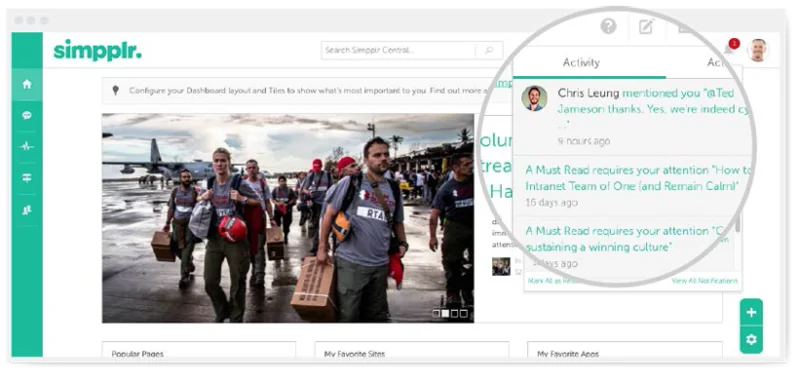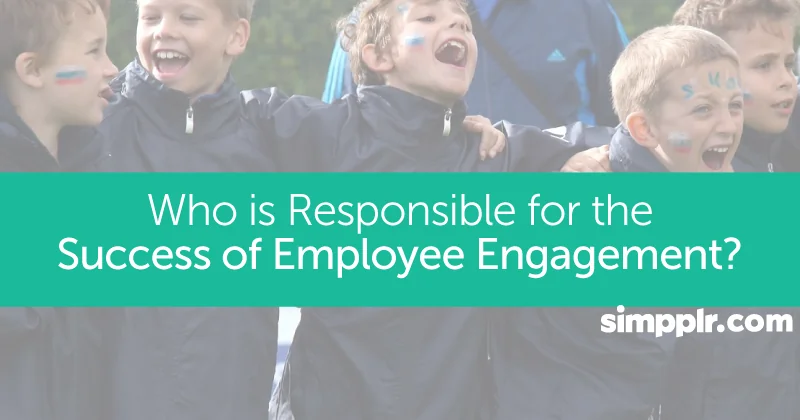When developing a comprehensive employee engagement strategy, it is easy to pass the responsibility on to Human Resources.
After all, the HR function is tasked with designing benefits packages, creating compensation structures, filling open positions and managing performance. However, these factors are only a piece of the overall engagement puzzle, and business leaders at every level are in the best position to have the biggest influence on engagement.
Direct Managers Drive Engagement Levels
Frontline supervisors — those who manage the day-to-day employee engagement activities of employees — have the largest impact on employee engagement.
The Gallup State of the American Manager Report is a massive study of managers and their teams, examining the importance of employee engagement and engagement patterns across 2.5 million manager-led teams and 27 million individual employees. The bottom-line finding is that direct managers are responsible for 70 percent of the variance in levels of employee engagement across business lines.

While poor compensation or frustration with organizational communication can influence employee engagement, the determining factor in engagement levels is the quality of management. With Simpplr, management can easily engage the employee pool.
The Changing Needs of Today’s Workforce
While there are certain management practices that have been proven effective over time, changes in the labor force have resulted in the need for revision of traditional methods.
Millennials are now the largest working generation, and they bring new expectations to the workplace. As a group, Millennials are accustomed to frequent feedback, and they show a strong preference for on-the-spot performance discussions — both positive and negative.
The annual performance evaluation is all but obsolete, as Millennials become disengaged without regular updates on their successes and opportunities. Successful managers are those who can offer the appropriate amount of feedback to keep employees engaged without crossing over to a state of micromanagement.
The Millennial generation was the first to grow up with internet access, and they have a high comfort level when it comes to digital technology. Mobile devices make it possible for remote employees to work anytime, anywhere, and Millennials are pushing back against traditional 9 – 5 work days.
Instead, keeping them engaged requires flexibility in where and when the work gets done, and these individuals expect to achieve a work-life balance. They are comfortable checking business email before bed, as long as they have the freedom to attend a child’s sporting event in the afternoon. Leaders who are able to manage productivity while still permitting the desired work/life balance are successful in creating high levels of engagement in team members.

Social media has transformed relationships, putting people of all ages, backgrounds and education levels on a level field. Individuals can develop friendships with strangers in all corners of the globe, which means today’s distributed workforce is accustomed to discussion and collaboration. In the workplace, these employees expect managers to be coaches and collaborative partners, rather than playing traditional boss/worker roles. Engagement levels rise when teams are close-knit, with leaders who offer support instead of giving instructions.
The Impact of Managers on Frontline Employee Engagement
It cannot be overstated how important frontline managers are to employee engagement. That puts even more emphasis on the role of middle managers. These next-level leaders are responsible for hiring and managing frontline supervisors, and research shows that most are failing spectacularly.
In fact, Gallup’s research shows that organizations are putting the wrong people in management a shocking 82 percent of the time. The study shows that there are five qualities to a good manager, and only 1 in 10 managerial candidates possess these critical skills:
Ability to:
- Make informed, unbiased decisions for the good of the team and the company
- Assert themselves to overcome obstacles
- Motivate employees
- Build trusting relationships
- Create a culture of accountability
When issues come up, next-level managers try to resolve the deficiencies with training, but this is — for the most part — ineffective. If frontline managers have the largest direct impact on employee engagement, managers of managers have a critical indirect impact as they select the individuals to fill frontline leadership roles.
Finally, managers making strategic decisions for the company are directly responsible for the organization’s commitment to communication and transparency. Research shows that 75 percent of employees crave a deeper understanding of the business so they can be stronger advocates for their company — and this isn’t news to leadership.
A study by The Aberdeen Group indicates that 28 percent of organizations believe that their failure to offer transparency and communication around major internal decisions is a significant factor involuntary turnover. While this may not be the only factor, it can be the deciding factor in an employee who is considering an offer from another organization.














